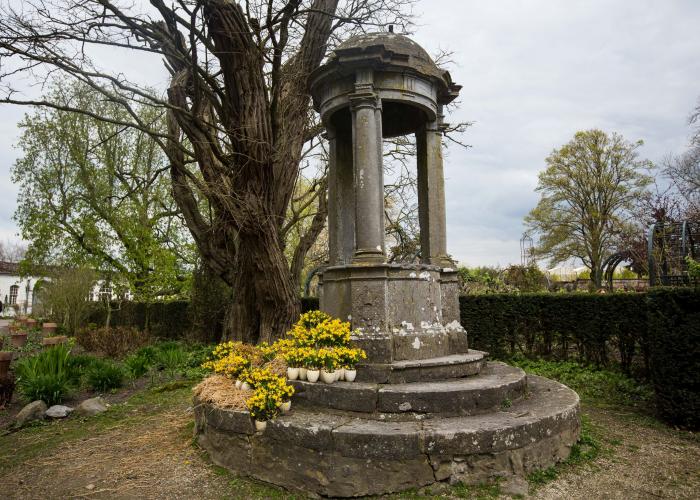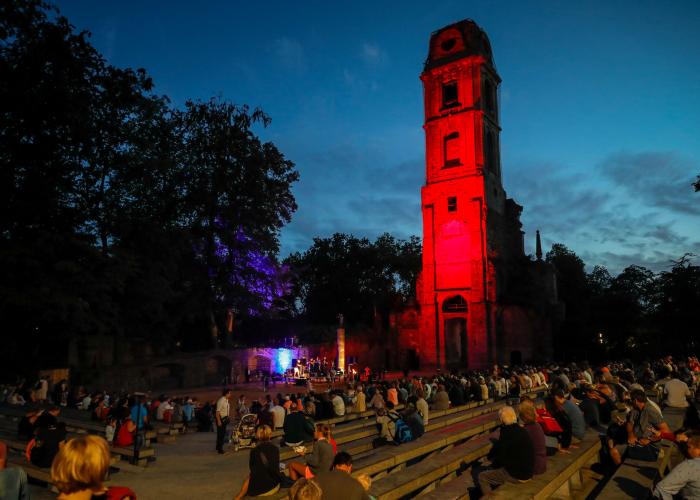The fantastic scenery at Pairi Daiza was shaped through eight centuries of turbulent history. It certainly is worth your while to take a moment to appreciate this rich past and in particular the remains of the original Cistercian Abbey. Your journey will take you along the high entrance gate, the graceful well, the crypt, the abbey tower, the monumental staircase and a chivalrous tomb.
The Great Gate
Dear travellers, this is the time to put everything behind you, the outside world with its cars, the fast pace of life, pollution and other minor inconveniences and take some time to take a deep breath, relax and look around. A double row of venerable, old lime trees leads you to the Great Gate, the monumental guard of the park. Our Lady of Cambron, carved from white stone, watches over this ancient domain from a considerable height.
The water well
Opposite the portal of the old church, in the shadow of an old acacia, stands this 17th century (1624) Renaissance well. It is an elegant water well with three Tuscan columns that support a dome.
The Abbey Tower, from the roof to the underground crypt
The tower is constructed in the Eighteenth Century, and apart from the dome, very little changed since then and when you step in here you leave the present day behind you. At a staggering height of 54 meters the towers dominate the area and their environs. The majestic, classical style contrasts very interestingly with the austere, blocky character of the St Bernard Tower, which dates back to an even earlier period. The abbey church of the glorious looks was more like a converted, whitewashed barn. At the foot of the tower lies a subterranean hall, covered by twelve domed cross-ribbed vaults. There is still no clarity about its function: remnant of an ancient parish church lost in the founding of the abbey? A cooling basement? Compared to the cellars of Burgundy Cistercian abbeys there is a striking resemblance: the same purity in style, the same realisation of sustained harmony and balance, the same processing of the building blocks. The crypt is connected to the underground vaults of the domain. In the event of enemy attacks they formed an escape route for the monks to Bergen or to Aat (the street name Rue de Cambron in Aat still bears silent witness to this).
The monumental staircase
Six centuries after its creation the abbey of Cambron does not show any resemblance to the small scale of yesteryear. The monumental staircase serves as the ultimate proof of the desire for sensational comfort that the monks had mastered. At the transition from the ponds to the higher abbey buildings the 3-fold staircase includes a passageway in the middle section and the Eastern Dender in the lowest section. The local population struggled to understand the need for this grandiose structure and gave rise to allegations that Cambron was corrupt. Comparing this structure with the table of the monks on the shore of the pond, which was no more than a slab of stone the vicinity of a refreshing source, one can understands the feelings of resentment. Back in 1776 Jozef II, the Emperor of Austria, was moved to state that the staircase could very well be the finest in Europe, but it was very doubtful whether it led to paradise. Legend states that the brothers burned an effigy of the emperor at the foot of the tower. That only brought them misery and 13 years later the Emperor classified Cambron as a useless abbey. The French Revolution did the rest. The patrimony of the monks of Cambron was listed as national heritage.




